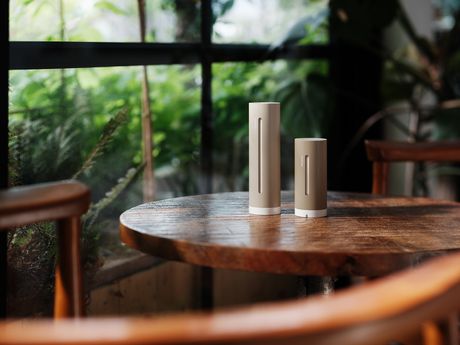
Netatmo dévoile la nouvelle Station Météo ORIGINAL

Jusqu'à -50% sur une sélection de produitsAcheter
Les détecteurs de présence, ce sont ces petits boitiers équipés d’un capteur, capables de détecter une présence dans une zone donnée puis d’agir en conséquence : éclairage automatique, alarme, ouverture d’un robinet... Cette détection se produit la plupart du temps à partir d’un mouvement – on parle donc aussi de détecteurs de mouvement. Quel détecteur de présence choisir ?

Voici la première question à se poser : à quoi va servir votre détecteur de présence ?
S’il s’agit d’un produit relié à un système d’alarme, le détecteur de présence ou détecteur de mouvement sera souvent proposé parmi un pack d’alarme complet. Son but ? La détection d’une présence indésirable et sa capacité à donner l’alarme. Son activation s’exprime par un voyant LED, un éclairage automatique et/ou une alarme sonore.
Les détecteurs de mouvement sans fil dernière génération sont capables de faire la différence entre un mouvement anodin, les mouvements d’animaux et les mouvements d’une personne. Ces détecteurs de présence connectés communiquent avec d’autres accessoires de sécurité du système d’alarme comme une caméra, qui filme alors la zone suspecte et envoie directement les images de l’intrusion.
Eclairage ou alarme, autant que votre détecteur de présence ne gâche pas la décoration de la maison. Beaucoup d’utilisateurs font ainsi le choix d’un détecteur de mouvement blanc, mural ou à fixer simplement au plafond. Ce type de détecteurs de mouvement sans fil est ultra simple d’installation, à l’intérieur comme à l’extérieur de la maison.
Un comparateur de détecteurs de présence en ligne risque de ne pas beaucoup vous aider si vous ne possédez pas le lexique adapté ! Netatmo vous donne un coup de main pour décrypter l’univers des détecteurs de mouvement :
En naviguant dans un comparateur en ligne, vous vous rendrez vite compte que les détecteurs de présence sont des produits au prix abordable. Comptez quelques euros pour les premiers prix de détecteurs, hors système d’alarme complet.